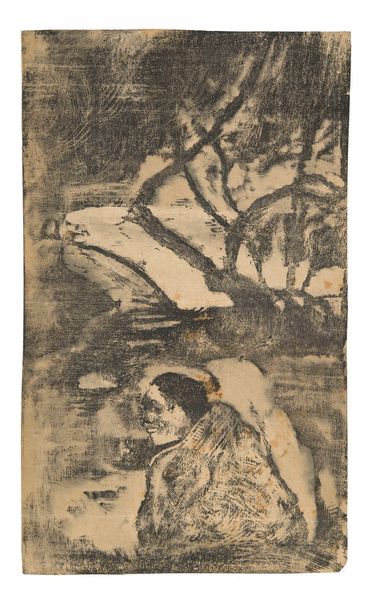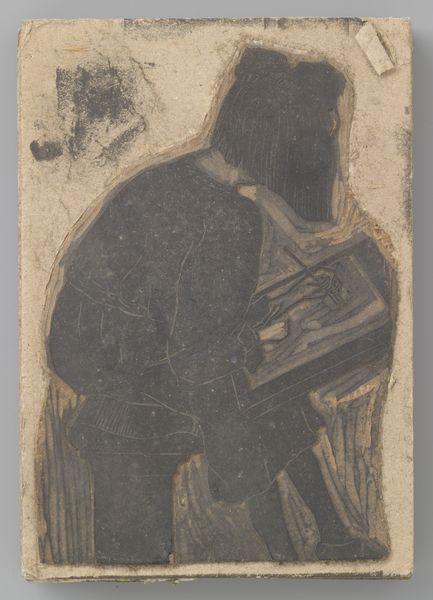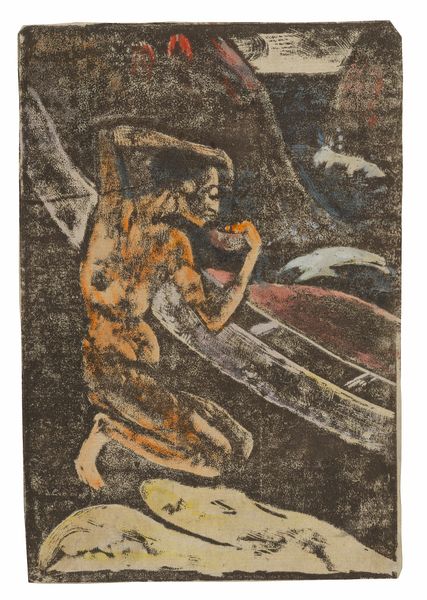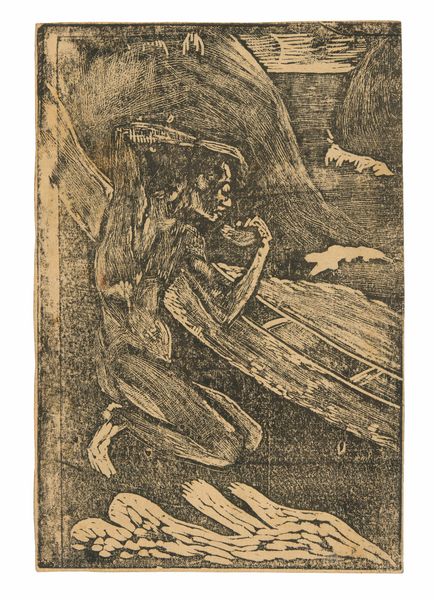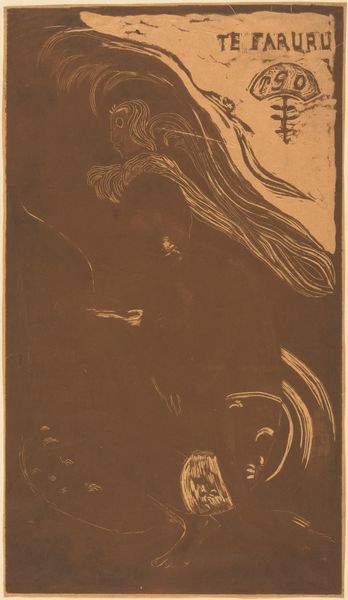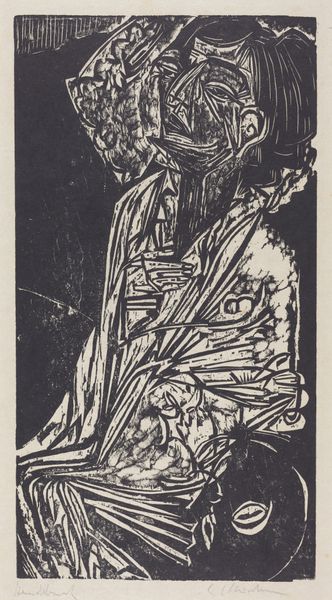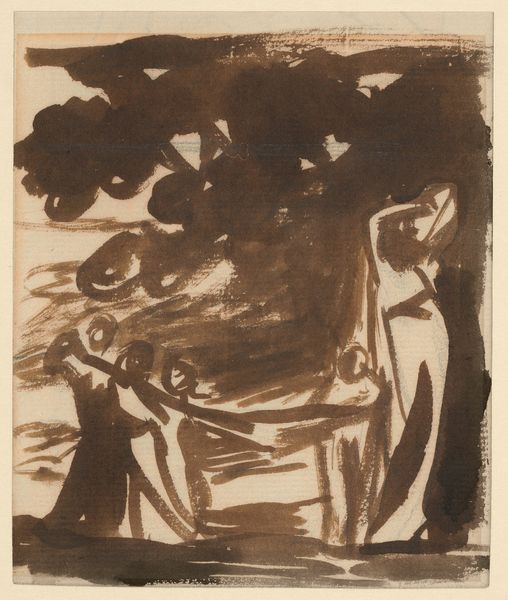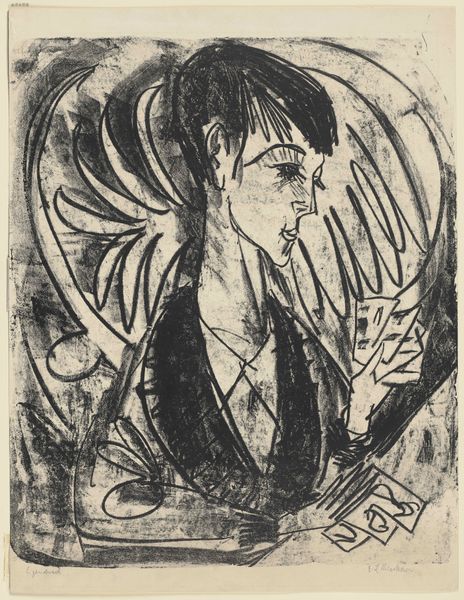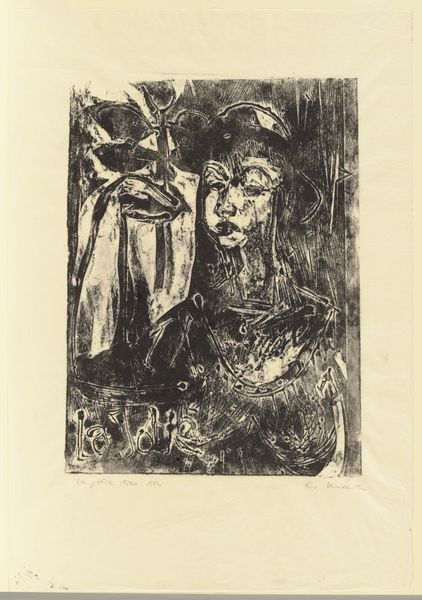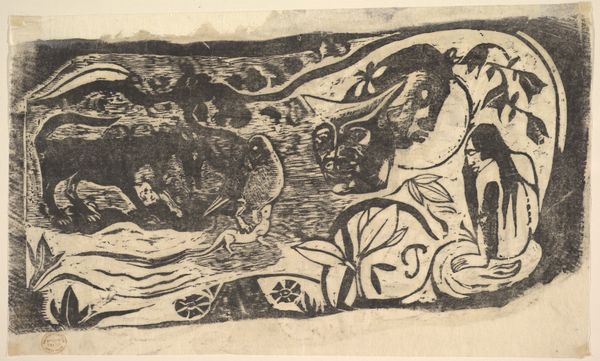
Here We Make Love (Te Faruru), from Fragrance (Noa Noa) 1893 - 1894
0:00
0:00
drawing, print, woodcut
#
drawing
# print
#
figuration
#
woodcut
#
post-impressionism
#
erotic-art
Dimensions: block: 13 15/16 x 8 in. (35.4 x 20.3 cm) sheet: 18 7/8 x 12 5/16 in. (48 x 31.3 cm)
Copyright: Public Domain
Curator: This is Paul Gauguin’s woodcut, "Here We Make Love (Te Faruru)," created between 1893 and 1894. It’s part of his "Noa Noa" suite, a visual diary of his experiences in Tahiti. Editor: My initial impression is of deep intimacy, yet it feels somewhat shrouded and ambiguous. The dark tonality dominates, giving the embracing figures a monumental quality but it looks quite brooding. Curator: Gauguin deliberately employed the rough texture of the woodcut to move away from the highly-refined style of academic art, echoing what he perceived as the rawness of Polynesian life. Look at the economy of the line and how he uses the negative space! Editor: But isn’t it problematic to view Gauguin's vision of Tahiti as unadulterated truth? His work is entangled with the history of colonialism and exoticism. It romanticizes an island paradise while overlooking the social and cultural disruption caused by European intervention. The title itself implies ownership of experience and a singular interpretation of love within a foreign context. Curator: The print relies on simplification and symbol. The embrace becomes archetypal, less about personal identity and more about universal connection and spiritual communion. I want to focus on his formal inventiveness, his manipulation of perspective. It offers a compelling visual statement. Editor: However, we need to also acknowledge how that visual statement reinforces a colonial gaze. Gauguin’s depiction essentializes Tahitian women, potentially feeding into a voyeuristic consumption of "the other." "Here We Make Love"—the possessive pronoun and definitive tone preclude genuine reciprocity. Curator: Ultimately, Gauguin prompts us to look deeper into his technical experimentation. There is beauty in the pure manipulation of line. Editor: I believe this work implores us to reflect on our own biases as viewers, acknowledging that what appears beautiful can be deeply fraught with historical complexities. Gauguin provides an opportunity to critically examine the colonial underpinnings of art history itself.
Comments
No comments
Be the first to comment and join the conversation on the ultimate creative platform.

